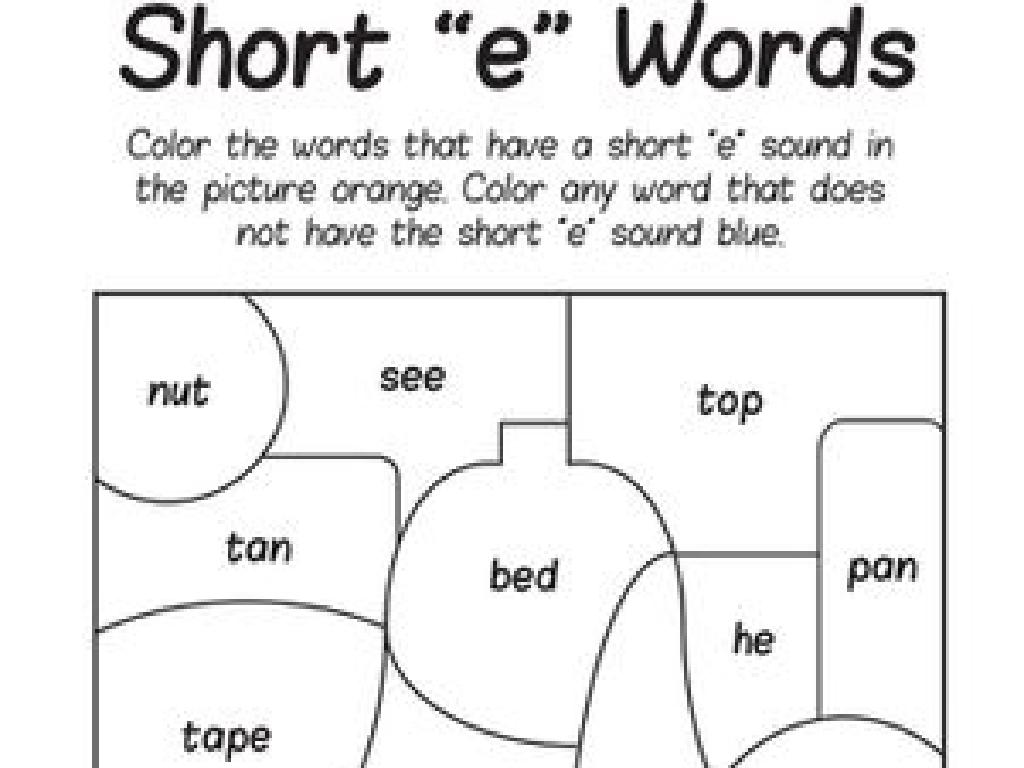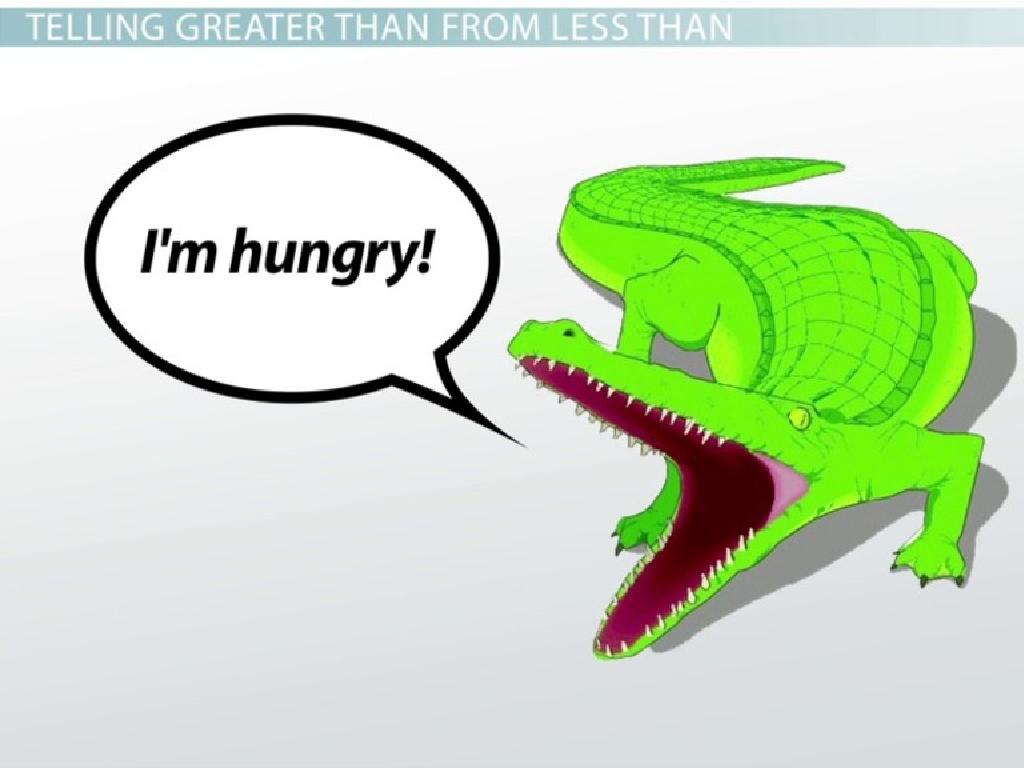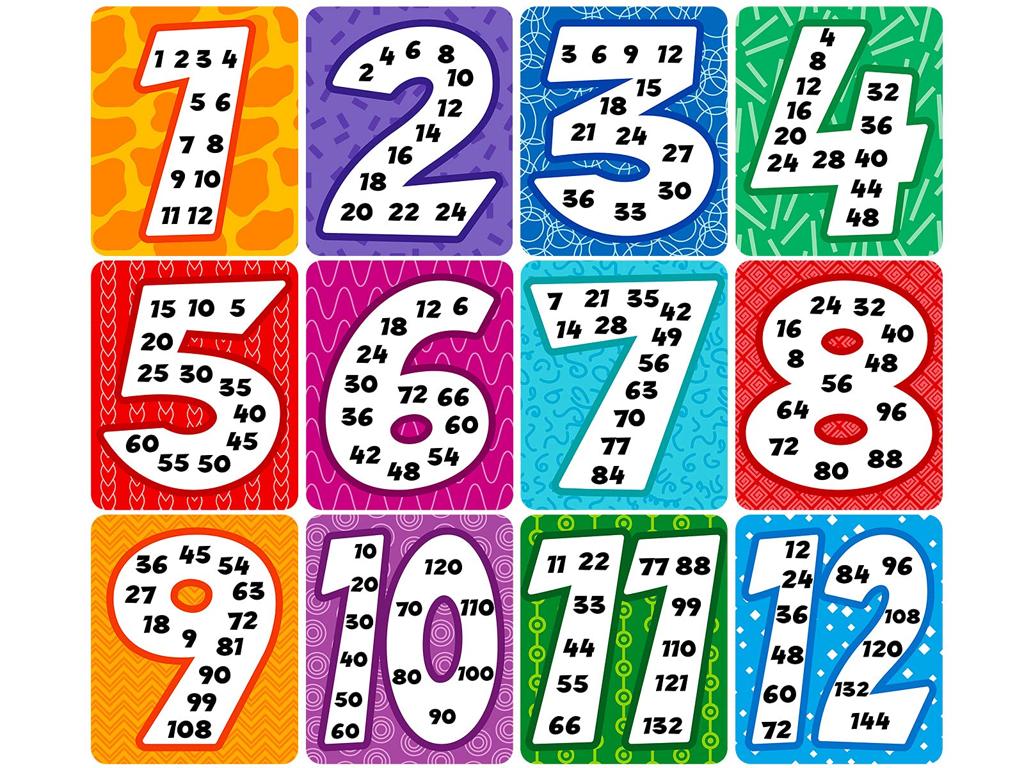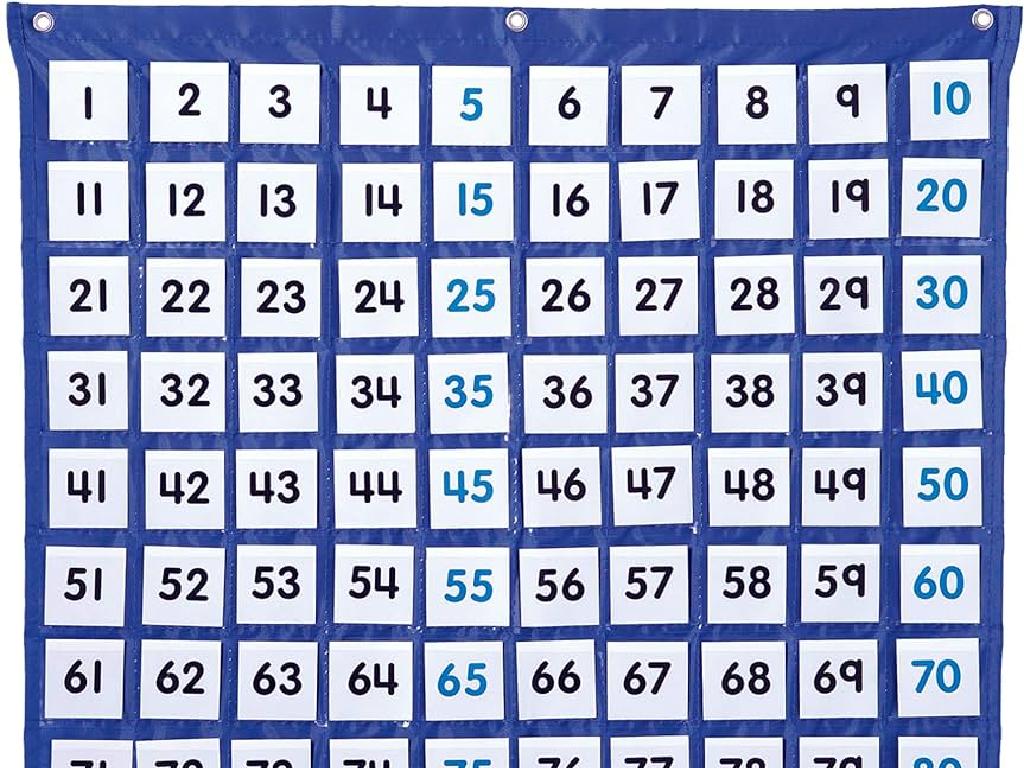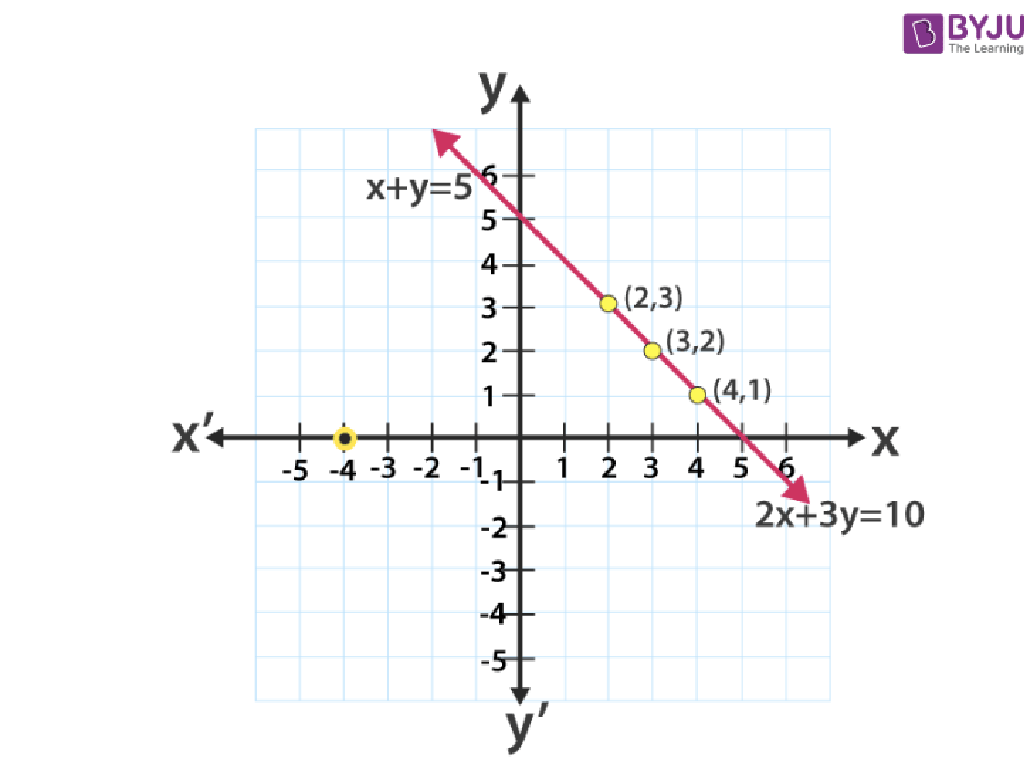Use Possessive Pronouns
Subject: Language arts
Grade: Third grade
Topic: Pronouns
Please LOG IN to download the presentation. Access is available to registered users only.
View More Content
Possessive Pronouns in Language Arts
– What are possessive pronouns?
– Words that show who owns something, like ‘his’ or ‘her’.
– Why use possessive pronouns?
– To show ownership without repeating names.
– Examples of possessive pronouns
– ‘His book’, ‘her pencil’, ‘their ball’, ‘our house’.
– Practice using possessive pronouns
– We’ll do fun activities to learn these words!
|
This slide introduces possessive pronouns to third-grade students, explaining their function and importance in language. Start by defining possessive pronouns as words that show ownership, which helps avoid repetition and makes sentences clearer. Provide common examples and use relatable objects like books and pencils. Engage the class with interactive activities where they replace nouns with possessive pronouns to demonstrate understanding. Encourage students to think of their own examples and share them. The goal is for students to recognize and use possessive pronouns confidently in their writing and speech.
Possessive Pronouns: Showing Ownership
– What’s a possessive pronoun?
– Pronouns that tell us who owns something
– Examples: mine, yours, his
– ‘That toy is mine.’ ‘The book is yours.’
– They show who owns something
– ‘The cat is hers, not theirs.’
– Replacing nouns with pronouns
– Instead of ‘Sarah’s book’, we say ‘her book’
|
This slide introduces the concept of possessive pronouns to third-grade students. Possessive pronouns are used to show ownership without repeating the noun. Start by explaining the term ‘possessive’, which means something belongs to someone. Provide examples of possessive pronouns and use them in simple sentences to illustrate their function. Emphasize that these pronouns help us avoid repetition and make sentences shorter and clearer. Encourage students to practice by identifying objects in the classroom and using possessive pronouns to describe who they belong to.
Possessive Pronouns: Singular and Plural
– Singular possessive pronouns
– ‘mine, yours, his, hers’ show ownership
– Plural possessive pronouns
– ‘ours, yours, theirs’ for groups
– Using them in sentences
– They replace nouns to show who owns something
– Practice with examples
|
This slide introduces possessive pronouns, focusing on the difference between singular and plural forms. Singular possessive pronouns (mine, yours, his, hers) are used to indicate ownership by one person, while plural possessive pronouns (ours, yours, theirs) are used for ownership by a group. When teaching, provide examples of sentences where these pronouns replace nouns to avoid repetition and clarify who owns an item. For instance, ‘The backpack is mine’ instead of ‘The backpack is my backpack.’ Encourage students to practice by writing sentences using both singular and plural possessive pronouns and to share sentences that demonstrate correct usage. This will help solidify their understanding of how possessive pronouns function within sentences.
Using Possessive Pronouns in Sentences
– Replace nouns with possessive pronouns
– Example: ‘The book is mine.’
– ‘Mine’ shows the book belongs to me
– Practice with a sentence
– We’ll practice replacing nouns with pronouns
– Turn ‘The book is Sarah’s’ into a new sentence
– How can we say this using ‘mine’, ‘yours’, etc.?
|
This slide is aimed at teaching third graders how to use possessive pronouns to show ownership in sentences. Start by explaining that possessive pronouns replace nouns to avoid repetition and to indicate who owns something. Use the example ‘The book is mine.’ to illustrate this concept. Then, engage the students in a practice activity where they convert the sentence ‘The book is Sarah’s’ into one that uses a possessive pronoun, reinforcing their understanding of how to use ‘mine’, ‘yours’, ‘hers’, ‘his’, ‘ours’, and ‘theirs’. Encourage students to think of items they own and how they would describe ownership using possessive pronouns.
Possessive Pronouns vs. Contractions
– Difference: It’s vs. Its
– ‘It’s’ means ‘it is’. ‘Its’ shows something belongs to ‘it’.
– They’re, Their, There
– ‘They’re’ means ‘they are’. ‘Their’ shows ownership. ‘There’ is a place.
– You’re vs. Your
– ‘You’re’ means ‘you are’. ‘Your’ shows something belongs to ‘you’.
|
This slide aims to clarify the common confusion between possessive pronouns and contractions for third graders. Start by explaining that possessive pronouns are used to show ownership, while contractions are shortened forms of two words. Use examples to illustrate the difference: ‘It’s’ is a contraction for ‘it is’ or ‘it has’, whereas ‘its’ is a possessive pronoun showing that something belongs to ‘it’. Similarly, ‘they’re’ is a contraction for ‘they are’, ‘their’ is a possessive pronoun, and ‘there’ indicates a location. Lastly, ‘you’re’ is a contraction for ‘you are’, while ‘your’ is a possessive pronoun. Provide examples and practice sentences for each to reinforce understanding. Encourage students to create sentences using both forms to demonstrate their grasp of the concept.
Let’s Practice Possessive Pronouns!
– Fill in the blanks with possessive pronouns
– Use ‘his’, ‘her’, ‘their’, ‘our’, ‘my’, ‘your’ to show who owns something
– Choose the correct possessive pronoun
– Which pronoun fits? ‘This is __ book.’
– Correct mistakes in sentences
– Find and fix the error: ‘That is heres backpack.’
|
This slide is an interactive class activity focused on possessive pronouns. Students will practice by filling in the blanks with the appropriate possessive pronouns, choosing the right possessive pronoun for given sentences, and correcting mistakes in sentences provided. For the teacher: Prepare sentences with blanks for the first activity, ensuring a mix of subjects to apply different possessive pronouns. For the second activity, provide sentences with multiple choice options for possessive pronouns. Lastly, create sentences with common errors in possessive pronoun usage for students to correct. Encourage students to explain their choices to foster understanding of possessive pronouns in context.
Possessive Pronoun Game: ‘Whose is it?’
– Let’s play ‘Whose is it?’
– We’ll form small groups
– Claim items using possessive pronouns
– Use ‘mine’, ‘yours’, ‘his’, ‘hers’, ‘ours’, ‘theirs’
– Have fun and learn together!
|
This interactive game is designed to help students understand and use possessive pronouns in a fun and engaging way. Divide the class into small groups to foster teamwork. Place various items on the board or around the classroom. Students will take turns claiming items by using possessive pronouns correctly, such as ‘That pencil is mine’ or ‘The book is hers’. This activity will reinforce the concept of showing ownership with pronouns. As a teacher, walk around to guide the students and provide positive feedback or corrections as needed. Possible variations of the game could include using pictures of items or creating sentences on the spot for peers to identify the correct possessive pronoun.
Class Activity: Possessive Pronoun Scavenger Hunt
– Find objects in our classroom
– Write sentences with possessive pronouns
– Use ‘my’, ‘your’, ‘his’, ‘her’, ‘its’, ‘our’, ‘their’
– Show ownership of items
– Share your sentences with everyone
|
This activity is designed to help students understand and use possessive pronouns in a fun and interactive way. Have the students search for objects in the classroom that they can claim temporary ownership of, such as a book, a chair, or a pencil. Then, instruct them to write sentences using possessive pronouns to show that ownership, for example, ‘This is my pencil,’ or ‘That is her book.’ Encourage creativity and correct usage of pronouns. After writing their sentences, students will share them with the class, which will reinforce their learning and allow for peer learning. Possible variations of the activity could include pairing students to find and write about objects together, using objects from a story or lesson, or even bringing in items from home to discuss.
Possessive Pronouns: Recap & Homework
– Review of possessive pronouns
– Write a story with possessive pronouns
– Include ‘my’, ‘your’, ‘his’, ‘her’, ‘its’, ‘our’, ‘their’
– Five possessive pronouns minimum
– Show ownership in your story, like ‘her apple’ or ‘their dog’
– Get ready for a pronouns quiz!
|
This slide aims to summarize the lesson on possessive pronouns and to assign homework that reinforces the concept. Students should be reminded of the importance of possessive pronouns in showing ownership and should be able to identify and use them correctly. For homework, they are tasked with writing a creative story that includes at least five different possessive pronouns, ensuring they understand how to use them in context. Additionally, prepare the students for a quiz on pronouns during the next class to assess their understanding of the topic. Provide examples and encourage creativity in their stories.

